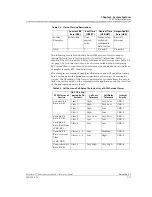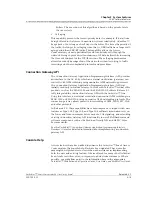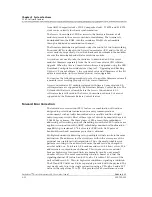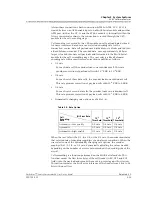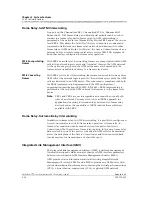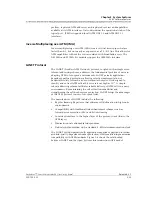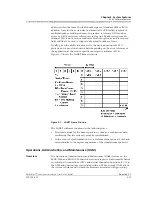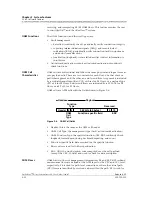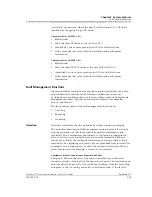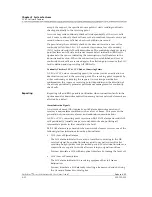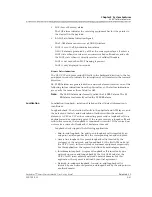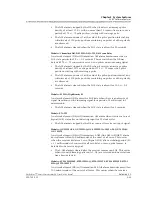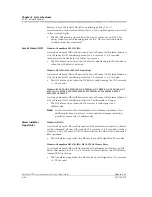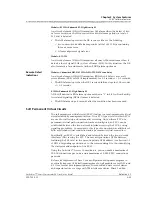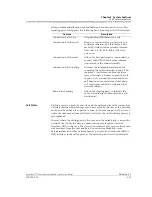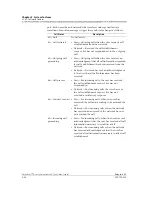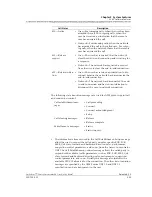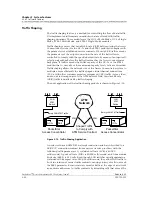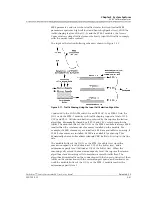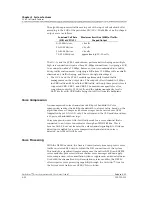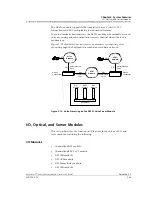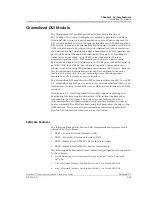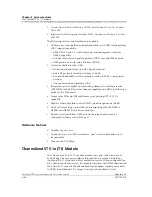
255-700-025
3-31
PacketStar
™
Access Concentrator 60 User Guide
, Issue 1
Release 6.3.0
Chapter 3 System Features
AC 60 Software Features
•
LOP (Loss of Pointer) alarm
The LOP alarm indicates the receiving equipment has lost the pointer to
the start cell in the payload.
•
P-AIS (Path Alarm Indication Signal)
The P-AIS alarm can occur on a SONET interface.
•
LOCS (Loss of Cell Synchronization) alarm
A LOCS alarm is generated by a NE at the convergence layer. It enters a
LOCS state when it receives seven successive bad cell headers, and exits
the LOCS state when it correctly receives six valid cell headers.
LOCS is not used when PLCP framing is present.
LOCS is only displayed in seconds.
Remote Defect Indications
The VPC/VCC end point sends RDI cells in the backward direction to the far
end point, in order to indicate the interuption of cell transfers in the forward
direction.
F4/F5 RDI alarms are generated when a network element receives one of the
following failure indications from the physical layer: The failure indications
are exactly the same as those listed for AIS.
Note:
The F4 RDI alarm was formerly called the F4 FREF alarm. The F5
RDI alarm was formerly called the F5 FERF alarm.
Localization
Localization (loopback): isolation of failed entities if defect information is
insufficient.
Loopback check: The detection of faults in the physical and ATM layers, and
the detection of defects and declaration of failures within the network
elements. A VPC or VCC end or connecting point sends a loopback cell to a
destination end or connecting point. If the source receives a looped cell back
within five seconds, the loopback is considered successful. If the source does
not receive a successful loopback, it declares a time out.
Loopback check supports the following applications:
~
End-to-end loopback: An end-to-end loopback cell is inserted by an
end point, and looped back by the corresponding far-end end point.
~
Access line loopback: A segment loopback cell is inserted by the
customer or the network, and looped back by the first ATM node (at
the VP/VC level) in the network or customer equipment respectively.
For this application, the segment is defined by mutual agreement.
~
Interdomain loopback: A segment loopback cell is inserted by one
network operator and looped back by the first ATM node (at the
VP/VC level) in an adjacent network operator domain. For this
application, the segment is defined by mutual agreement.
~
Network-to-endpoint loopback: An end-to-end loopback cell is
inserted by one network operator, and looped back by the end point in
another domain.
Содержание PacketStar AC 60
Страница 38: ...Chapter 1 Getting Started 1 14 255 700 025 PacketStar Access Concentrator 60 User Guide Issue 1 Release 6 3 0 ...
Страница 128: ...Chapter 3 System Features 3 80 255 700 025 PacketStar Access Concentrator 60 User Guide Issue 1 Release 6 3 0 ...
Страница 404: ......
Страница 406: ......
Страница 408: ......
Страница 409: ......

